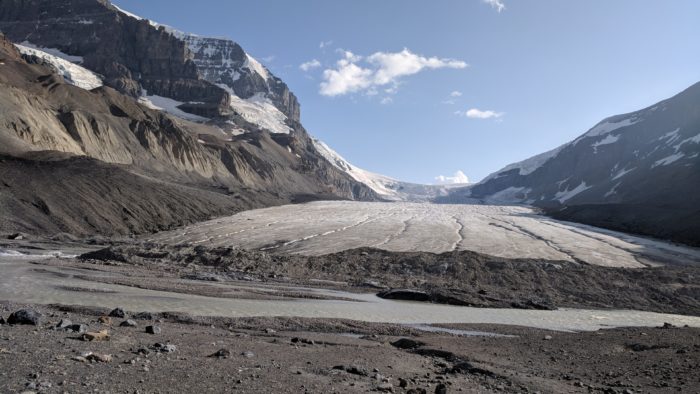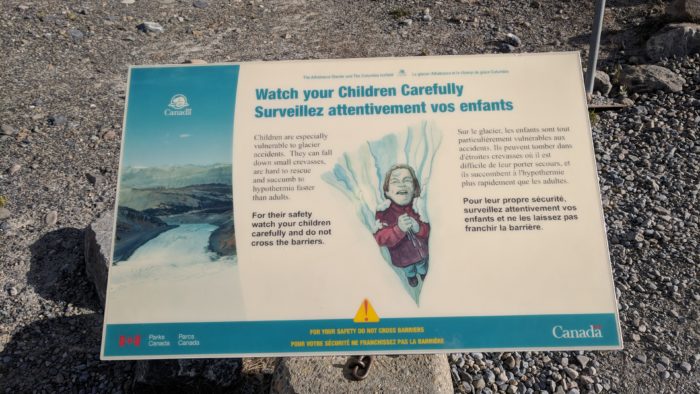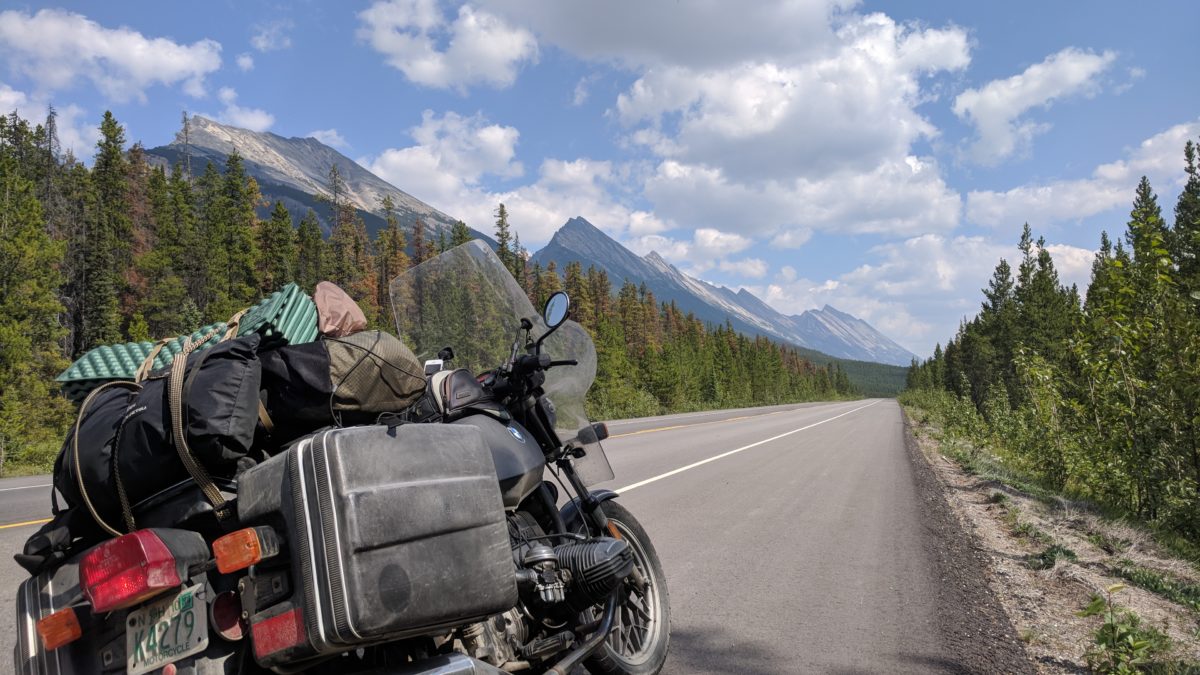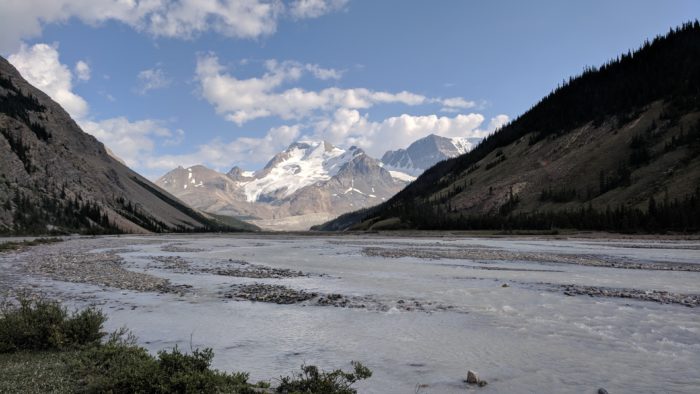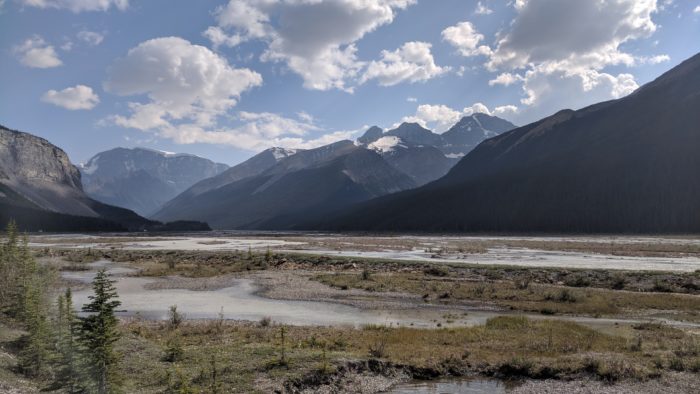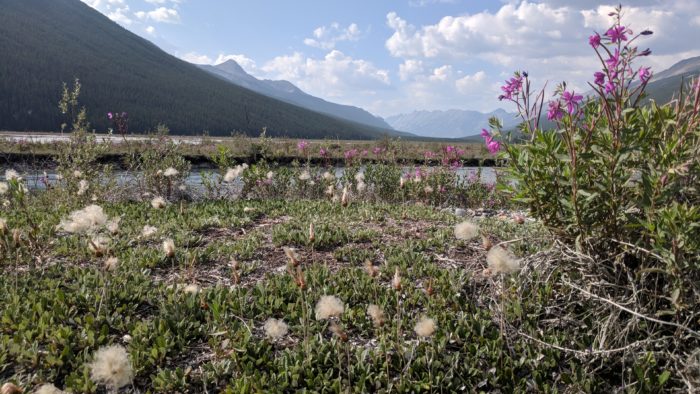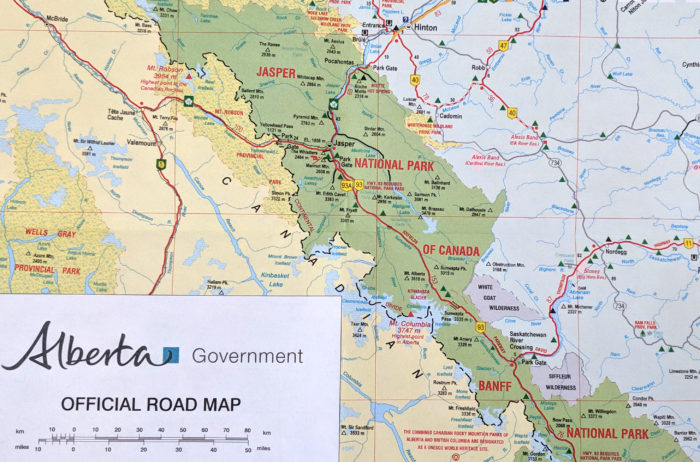Mt. Robson signals the shift into the Canadian Rockies, a great snowy peak looming into view. It also signals the imminent crossover from British Columbia to Alberta and into Jasper National Park. It’s a sunny, beautiful day, the sky bright and blue and puffed with clouds.
Just inside the park, two huge, beautiful elk graze by the side of the road, glowing and perfect as if newly-made. The antlers shimmer with fuzz, textured and rippled like wood covered in moth’s scales, or great long bones glistening with enchanted moss.
Then the Rockies simply explode, above and below the road at the same time, taking up so much of the sky they might qualify as a third kind of creation, heavens/earth/mountains, as vast as twilight. The rivers are creamy blue with froth, the color of warm ocean surf.
All of the elements are familiar, peaks and snow and glacial rivers, but the combination is new and more. The mountains are vast and each unique, each doing its own thing, ridges and spires and turrets cavorting, dancing with the sky as the road bobs up and down, around and through.
It’s like being surrounded by laughing gods.
I stop at a park sign that says “Goats and Glaciers” and after a hundred-foot walk, there they are. Glaciers trail out of the ridge beyond, blue glacial streams ripples across the riverbed below, and along one edge tiny, snowy-white mountain goats the size of grains of rice drink from the river, picking their way along the shore.
It’s only mid-day and I feel like I’ve seen too much. I need it to stop, I need a break, a dark room, silence. It’s as if things are accelerating and now I will be struck down by wonder not just every day, but every half-day; soon every hour, then every minute knocked to my knees, endlessly writhing in the rapture of the holy, a broken Shaker, another madman.
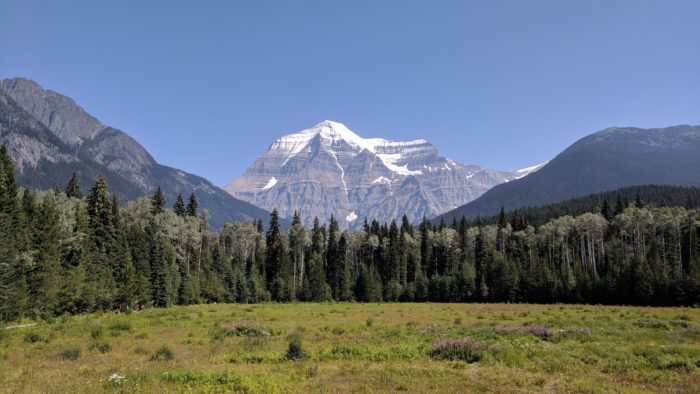
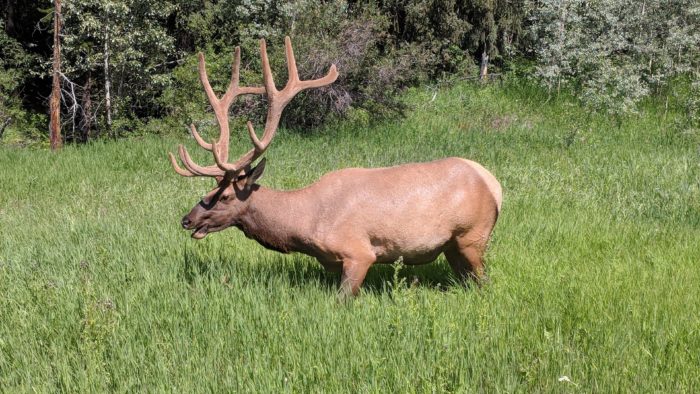
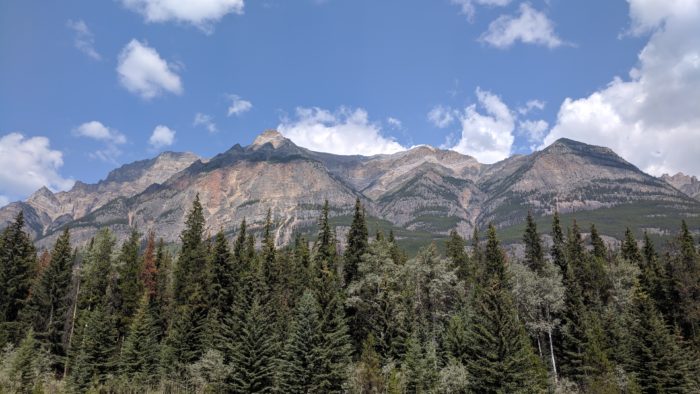
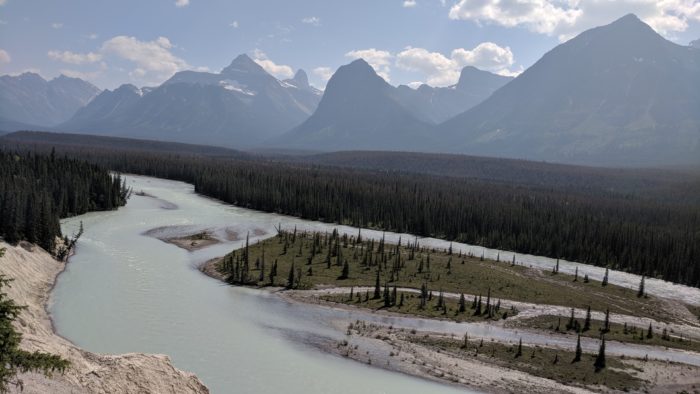
But it doesn’t stop, and three glaciers pour down onto the visitor center as I drink my coffee. I’ve only made it a few miles. I don’t know how I’m going to get out of here. I only have a day pass; if I don’t reach the edge of the park by dark I’ll have to live here forever.
I pass wide, flat riverbeds where the colors are all wrong, light frothy greens and purples skimming across pearly stone beds, delicate alien puffballs swaying in the wind. The whole thing feels unearthly, habitats remixed and refracted into each other and painted with the colors of Faerie by a mad Maxfield Parrish.
There’s a stone field where the sharp pieces of gravel are larger than trees, or maybe the trees are tinier than rocks. It’s hard to tell since the perspective is broken.
Icefields and tundra flowers, tiny streams and roaring planes of water, perfect smooth stones and mountains out of myth are all mixed together in the sky and preserved in a brine of sunlight.
By the time I reach the toe of Athabasca glacier, I am laughing and crying and can barely look at it. A moon-path leads right up to it, its great wrinkled skin dirty and icy and ancient like the surface of Europa.
A river comes right out of it, not some slow watershed-wide process of accumulation, but right there, you can see a river created, sprung fully formed from the glacier’s side to run off down the valley. Creating rivers is a great magic.
These are the only times I’m happy, the only times I’m really alive, when I cease to exist and become wholly myself, both.
